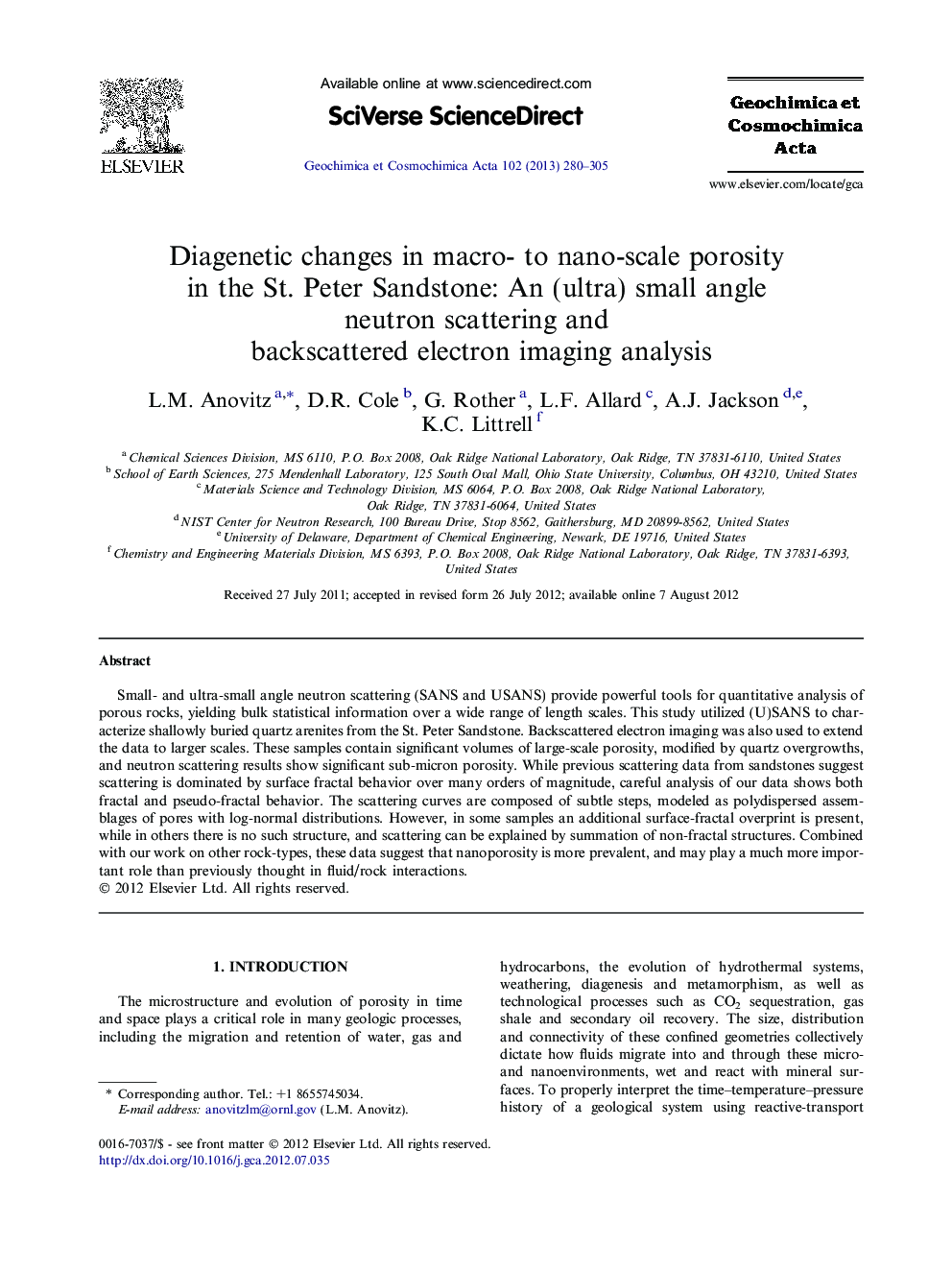| Article ID | Journal | Published Year | Pages | File Type |
|---|---|---|---|---|
| 4702582 | Geochimica et Cosmochimica Acta | 2013 | 26 Pages |
Small- and ultra-small angle neutron scattering (SANS and USANS) provide powerful tools for quantitative analysis of porous rocks, yielding bulk statistical information over a wide range of length scales. This study utilized (U)SANS to characterize shallowly buried quartz arenites from the St. Peter Sandstone. Backscattered electron imaging was also used to extend the data to larger scales. These samples contain significant volumes of large-scale porosity, modified by quartz overgrowths, and neutron scattering results show significant sub-micron porosity. While previous scattering data from sandstones suggest scattering is dominated by surface fractal behavior over many orders of magnitude, careful analysis of our data shows both fractal and pseudo-fractal behavior. The scattering curves are composed of subtle steps, modeled as polydispersed assemblages of pores with log-normal distributions. However, in some samples an additional surface-fractal overprint is present, while in others there is no such structure, and scattering can be explained by summation of non-fractal structures. Combined with our work on other rock-types, these data suggest that nanoporosity is more prevalent, and may play a much more important role than previously thought in fluid/rock interactions.
